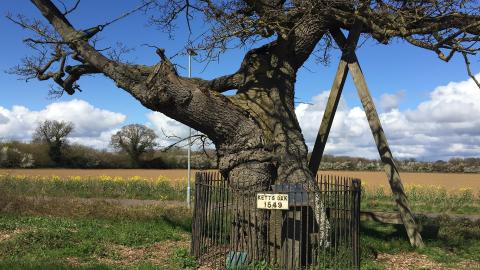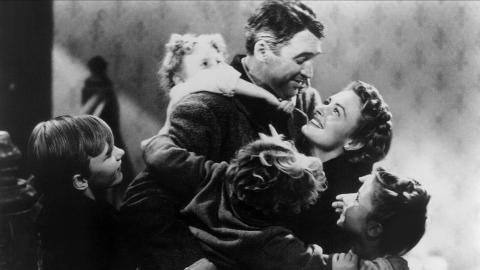Death in the Dark Ages
Medieval life became characterised by a preoccupation with death - terrifying depictions of purgatory and hell were painted on church walls to remind congregations that worrying about the afterlife was more of a priority than any of your earthly woes.
Roman Burials
Despite the recorded ‘crushing of the Druids’ and the tentative introduction of Christianity, burial practices under the Romans changed little from the localised traditions of what had gone before. People were still buried in barrows or cremated and goods surrounded the graves of the dead. However burial customs continued to keep up with the technological advancements of the time, the practice of burying ashes in glass urns for example coincided with the introduction of glass by the Romans. Under Roman law, burial grounds moved from within settlements to along major roads. One strange exception to this rule was the burial of infants, who were often interred under the threshold of a building or in the corners of rooms.
Anglo Saxon Burials
The Anglo Saxon settlers after the Romans changed things again. As a well-established culture in their own right, the Anglo Saxons paid little attention to the precedents set by the Romans, and set up their own cremation cemeteries. However the higher status Anglo Saxon burials could be extravagant. In the 7th Century, King Raedwald was buried in a 27 meter long clinker built ship at Sutton Hoo surrounded by the sumptuous goods of the day, including a finely wrought ceremonial helmet, musical instruments, gold, food, rich fabrics and furs.
Purgatory
Under Æthelberht of Kent, the Christianity initially brought to the British Isles by the Romans slowly became entrenched, bringing with it notions of Purgatory and Hell. Terrifying depictions of these were helpfully painted on church walls to remind congregations that worrying about the afterlife was more of a priority than any of your earthly woes. Thus medieval life became characterised by a preoccupation with death. Apart from trying to be a good person, preparations for your soul after death could take the form of lighting candles, giving to the poor, and going on pilgrimage. However death did not stop you from trying to ensure that all could be done to secure yourself a place in heaven. William Courtney, the Archbishop of Canterbury paid for 15,000 masses to be said to speed his soul through purgatory when he died in 1496, more than the reigning monarch at the time, Henry VII who only paid for 10,000.
Christian Burials
The beliefs associated with Christianity were expressed in early medieval burial rites. While burying the dead in an East-West alignment had occurred in previous burials, after the adoption of Christianity the practice became much more prevalent, accompanying the belief that in facing East they would be able to see Christ’s resurrection on Judgement Day. There was also a reduction in grave goods and Christian symbols started to appear on monuments and mausoleums.
Jewish Burials
Medieval Jewish cemeteries have also been unearthed in London, Winchester, and York, coinciding with the advent of Judaism in the British Isles after the Norman Conquest. In these, men and women tended to be buried in different sections of the graveyard. As with Christian burials, bodies were laid out facing East, but unlike early Christian burials, each body was carefully given its own defined space due to the belief in the bodily resurrection of the dead on Judgement Day.
Plague Deaths
The life span of people in the middle ages was rather short (you were lucky if you made it to your early thirties) but as of 1348 the death rate rose to a whole new level. The Plague, or ‘Great Pestilence’ as it was then known, spread across the English Channel from continental Europe and would become a major feature of people’s lives for over three centuries. The disease, thought to be from the bacteria Yersinia Pestis in either its Bubonic form (bacteria spread by the fleas on rats) or Pneumonic form (spread through the air), attacks the lymph glands resulting in boils around the neck, groin and armpits. The sufferer would experience fever, gangrene, seizures, muscle cramps and many of those infected would die within four days.
In 1665 the plague reached an all time high, killing a record number of 100,000 in London alone. Due to the growing population earlier plagues had in fact carried off a greater proportion of people, like the plague of 1563 where 20.5% of the population succumbed.
Plague Burials
The enormous death toll claimed during periods of plague resulted in changed death and burial practices. The terror of plague meant that many would flee the cities. This, coupled with the high death rates meant that many priests were no longer around to administer last rites, an extremely important ceremony for the devout of the medieval period. The sheer quantities of dead that resulted from a season of plague required an efficient system to dispose of bodies quickly. This resulted in rushed interments, with people less likely to be buried in coffins and instead merely wrapped in a shroud. Many of the dead were collected at night by ‘Plague Bearers’, often destitute apprentices, who would announce their presence with a bell and take their load away for burial by morning. This was a dangerous job, many of these workers falling to the illness themselves: in Stepney it was said that within a year they lost 116 sextons, grave-diggers and their assistants.
Mass Graves
Mass graves had been used before for poorer burials. Whereas early mass graves could be ascribed a certain level of dignity with bodies laid out neatly, during the plague any ceremony was often abandoned in favour of speedy disposal. In big cities, where plague often struck worst these ‘Plague Pits’ often lie forgotten beneath huge swathes of the land. In Edinburgh for example, the Meadows, an area now used as a public park was once a giant mass grave, as was Charterhouse in Smithfield, London’s biggest plague pit in which it is thought 50,000 victims were interred.
Did you know?
When Lucy De Vere, the first Prioress of the Benedictine nunnery in Hendingham died in about 1225 her successors sent out a roll, over 19 feet long to other religious houses asking them to pray for her soul. In turn, they added their own requests for reciprocal prayers to the lengthy document.
















